Disclaimer: This blog post contains affiliate links.
The lingerie world’s solution to plus-size representation is plus-size models. After all, one model above a US 10 / UK 14 surely represents the entirely of the plus-size world! (Sarcasm).
Today, I would like to talk about things small and big brands and boutiques can do to embrace plus-size diversity, create plus-size representation, and help plus-size women successfully shop for lingerie.
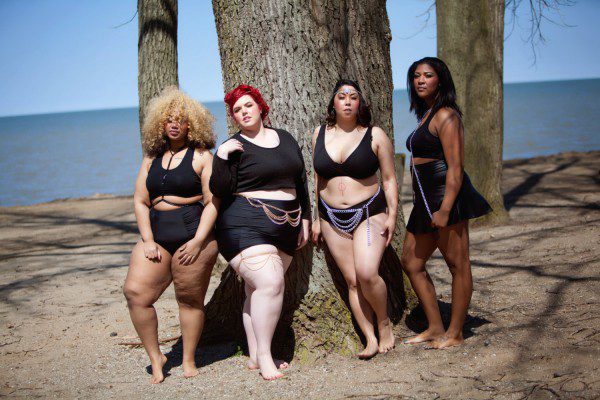
Chain garter and harness accessories by Ready to Stare
1) Use models of diverse weight & weight distribution
Plus-size women come in all shapes; however, plus-size models seem to come in just one: the hourglass (usually with a flat tummy). Yet weight can be concentrated in different areas such as the bust, hips, waist, back, and thighs.
Shooting lingerie on ‘small plus-size, acceptably-curvy’ women is not enough. True plus-size representation needs to embrace women of all different shapes. Companies like RavenDreamsLtd (below) and Ewa Michalak are examples of how to shoot lingerie using size-diverse models: they just do it.
Weight diversity is also a key issue in plus-size representation. A size US 14 / UK 18 model does nothing to represent a size US 22 / UK 26 customer. It is rare for lingerie companies to use heavier models, thus I admire Hanna Broer as one of her feature models is outside the ‘bare minimum plus-size’ category.
These are beautiful women who want beautiful lingerie and who want to see themselves represented in the lingerie world. Not only does this sort of imagery show plus-size women that they are seen and heard, it also shows them that they can buy beautiful lingerie for their body. This representation is so important for women who do not fall on the smaller end of the plus-size spectrum.

Angelina Silk Chiffon & French Chantilly Lace Babydoll by Raven Dreams (36-50 A-JJ)
2) Give the model’s measurements & the sizes they are wearing
It is wonderful to see plus-size models modelling lingerie but there is often a disconnect between the size you see yourself as and the size you think the models are. The model could even be your size and you might never make the connection. It would be very helpful if the model’s measurements and the sizes they are modelling were given.
For bras, this would be underbust and full bust measurement as well as bra size. For underwear, this would be hip and waist measurements as well as size modeled. Other lingerie would need measurements as appropriate.
I recently saw Catherine from Kiss Me Deadly try on a sample pair of knickers (size Small) on Facebook. When I found out she has a 42” hip, I suddenly had 100% faith that I would have no problems fitting into a size Large. I do not know of any lingerie companies that divulge this information on their websites, so if you do then let me know!
3) Share images of plus-size customers wearing your merchandise
It is expensive to shoot your own models so most small business and boutiques really cannot afford to create inclusive images for their store. Rather, they use the images provided by the brands they sell. Whether you run your own brand or run a boutique however, you can include plus-size representation through customer image galleries.
While not specifically a lingerie company (though they do sell bodysuits, swimsuits, etc.), Black Milk Clothing, who go up to an XL / 49” hip, have an image gallery on each product page. Customers simply tag their photos on Instagram or Facebook to have them added to the website. I love these customer photo galleries as I can scroll through the pictures and see what each item looks like on women around my size.
Boutiques and brands can also use social media to support their plus-size customers. Retweet and share images posted by your larger customers modelling their new purchases. Other plus-size women will see these images and realise a) that you carry lingerie that will fit them and b) that they too can look smoking hot in your products.
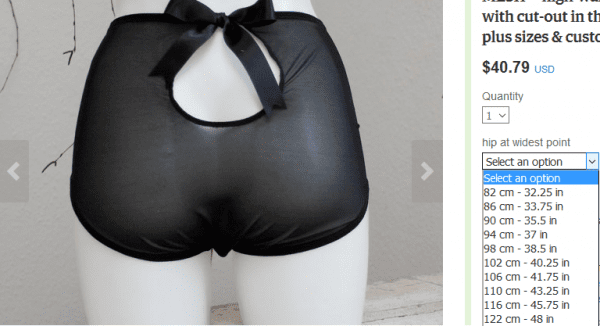
ParaNoire‘s size selection for bottoms.
4) Use measurements instead of dress sizes
I broached this subject in my previous article, but it bears repeating. Dress sizes really mean nothing when it comes to plus-size lingerie. Because weight can concentrate in different areas, measurements are paramount.
I admire ParaNoire as they do not use standard sizes like L, XL, 2XL. Instead they use hip measurements for their underwear and underbust/bust measurements for their bras. In many ways, these measurements bypass stigmas associated with wearing certain sizes.
In addition, I also recommend including information on the stretchiness of the material used. Phrases such as “no stretch, moderate stretch, more stretch than you can shake a stick at, etc.” are quite useful for plus-size women. Many women end up buying lingerie that is a size ‘too small’ because of lack of size range but can actually be quite comfortable in that size smaller if there is a good deal of stretch to mold to their curves.
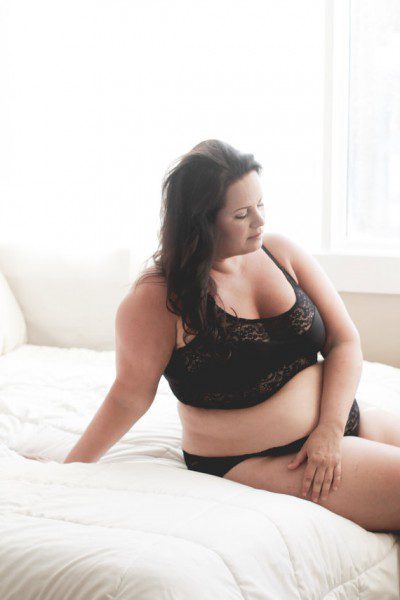
Black Organic Cotton & Lace Bralette by Hannah Broer (XS-XXL)
5) Try expanding size-ranges through a pre-order system or group funding
It is the same old story: you release a line of lingerie and everyone says “why don’t you make this in my size?”. Frankly, it is expensive to expand sizes. It is also made even more expensive by demand not being followed up by purchases.
However, there are many plus-size women who truly want beautiful lingerie and would be delighted to put their money exactly where their mouth is. Companies can create a pre-order system whereby plus-size customers purchase lingerie and lingerie sizes are expanded / made based on the pre-order numbers. If a size is simply not ordered, then it is not produced. I am delighted that Playful Promises*, who offer full-bust options that many plus-size women wear, have recently expanded their size range which they had on pre-order until November 1st.
Brands attempting major size expansion can also use group funding websites like Kickstarter and Indigogo, where funds are committed prior to production. Boutiques can also test the plus-size market with pre-orders for sizes they normally would not carry.
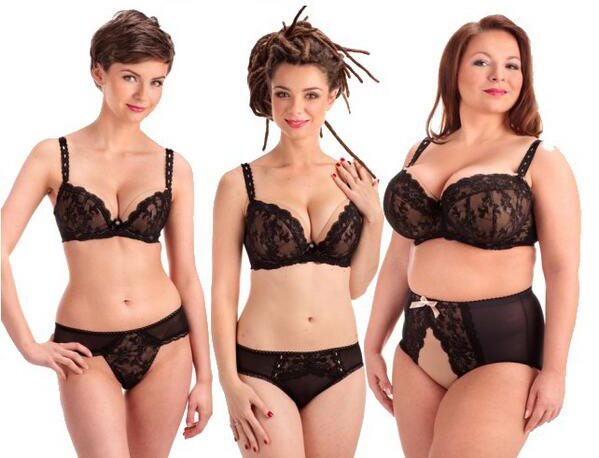
Ewa Michalak‘s diverse model selection shows the range on different body types
6) Clearly communicate design differences between core-size & plus-size
Sometimes you order a piece of lingerie and it just does not look like it did in the picture. For the plus-size market, this is a common occurrence.
Often the plus-size version of a bra will have a higher gore, thicker straps, and fuller-coverage cups. If the plus-size version differs from the core size, then make sure that these changes are noted in the description. This information is vital for plus-size customers especially when the majority of lingerie is still modelled by core sizes.
While some modifications to plus-size lingerie are for support, many appear to just increase modesty. Extra layers of mesh that turn a sheer piece semi-sheer, a raised gore, fuller-coverage cups, etc. are often unnecessary deviations from the core style. Plus-size bodies are gorgeous and they do not need to be covered up more than other body types!
7) Create a size generator for lingerie (beyond bras)
This last point is more of a little fantasy of mine, so let’s hope some big company actually picks up the idea and runs with it. Currently we have size generators where you enter your underbust / bust measurements and hey presto: your bra size is spit out. I would love to see the same sort of calculator used for underwear and other lingerie in the future.
Many women struggle with what size to buy when their bust, waist, and hip measurements fall into different size categories. Plus-size women are more affected by this as weight can more heavily accumulate in various regions. For lingerie such as chemises, babydolls, and robes, the same sort of calculator is possible using a combination of bust, waist, and hip measurements. A calculator such as this would have told me not to buy half the lingerie sitting in my storage trunk right now 😉
Do you have any suggestions to increase plus-size representation and help plus-size women successfully shop for lingerie? We would love to hear your thoughts!
Avigayil.
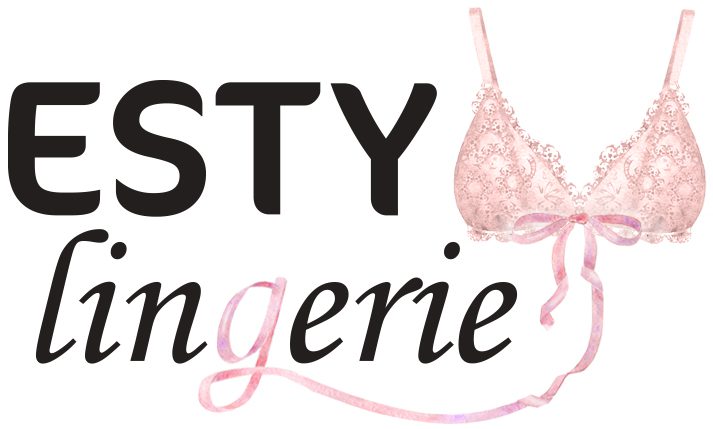
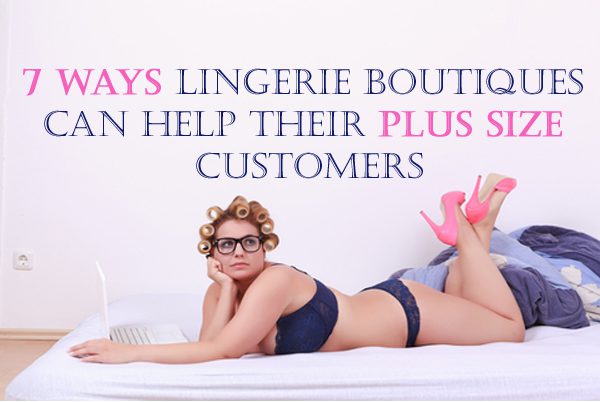
1 comment
Hi Avigayil. Great article – and in particular point 4 is something I’ve been thinking about for a while now. It genuinely shocks me that so many companies use the overtly subjective small, medium and large sizing “system”, even companies that are very inclusive in other ways eg Smart Glamour (I know they’re clothing rather than lingeries but hey….).